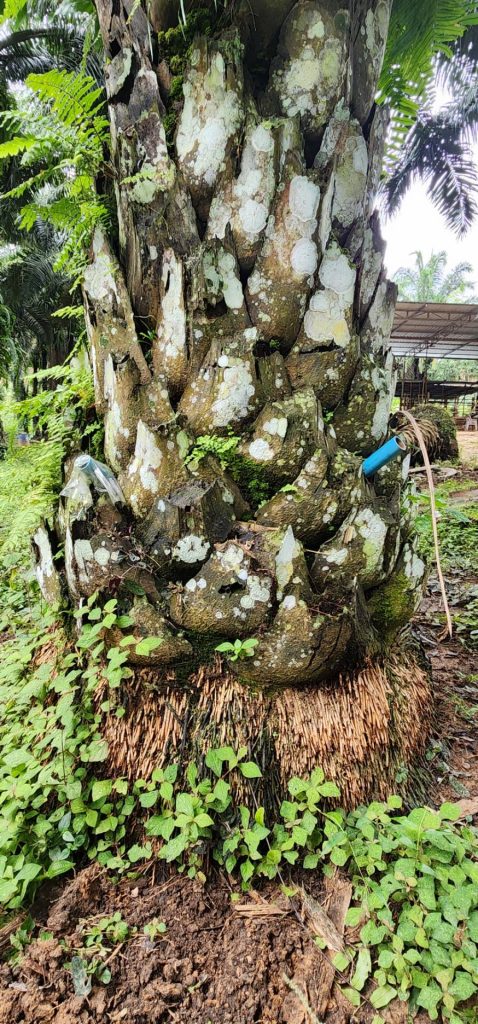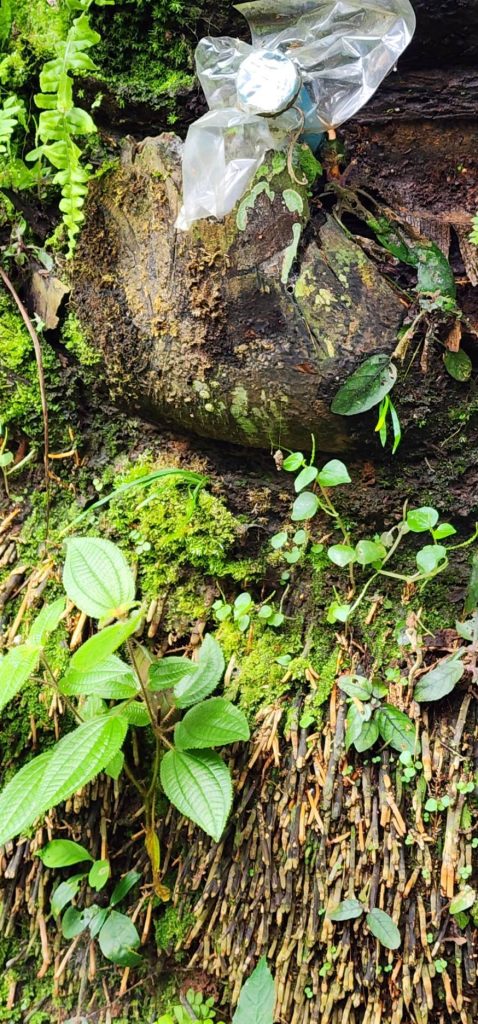Basal stem rot in oilpalm tree is caused by fungus, Ganoderma Boninense, which is related to LingZi mushroom. The fungi usually stay in soils at 60 cm deep. It gets into oilpalm tree through roots and the infected oilpalm tree will not show any kinds of symptoms during the first 5 years.
Symptoms:
The first symptoms of infection are similar to drought conditions. There are a lot of fully elongated but unopened spears. This indicates that the stem or root system is already extensively damaged, thereby restricting water uptake. The lower leaves collapse and hang downwards vertically attaching to the trunk. The base of the stem blackens and later, gum may exude and the basidiocarp of the fungi may be found. The crown of the palm may then fall off or the trunk may collapse. Palms normally die within 2-3 years after the appearance of unexpanded spear leaves.
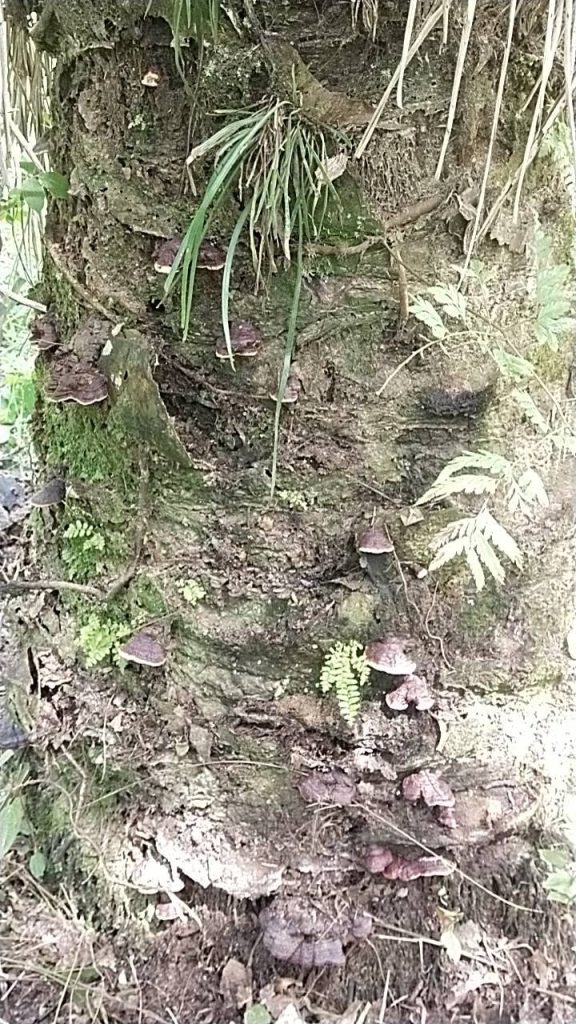
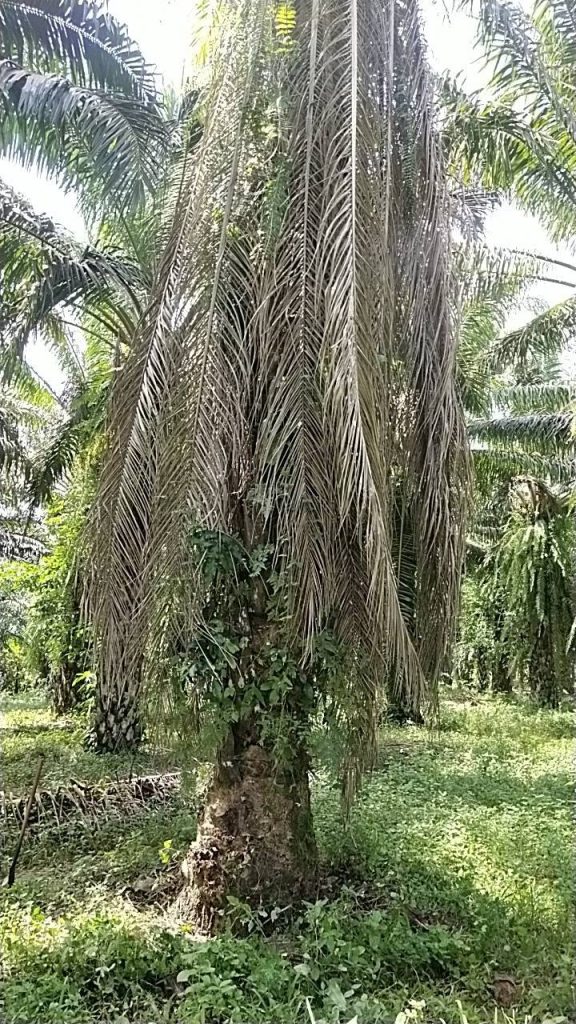
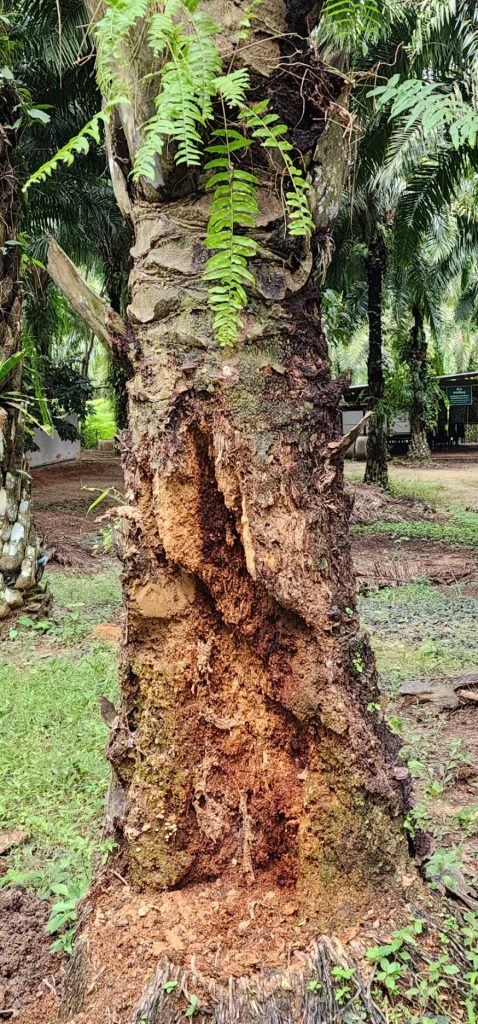
Treatment Procedures
- Mix 50 grams of KetoPluz in water, apply around root area
- Remove and burn down all basidiocarps to prevent spreading
- Remove attached leaf base around trunk from ground upto 3-4 feet high. Then mix Super Silicon Voga and KetoPluz with water to form paste. Apply paste around trunk area.
- For severely infected tree, drill 4 holes around trunk at 2-3 feet high from ground and inject 100cc of KetoMax into the trunk (25cc for each hole).
- To help provide nutrients and reduce diseases inside, mix 20g of Super Silicon Voga and NitroPluz with water and spray onto leaves.
- New root growth is an indicator that the palm tree is recovered. It usually takes around 2-3 months.
- Apply Voga Silicon fertilizer regularly to help strengthen palm trees and prevent diseases.
